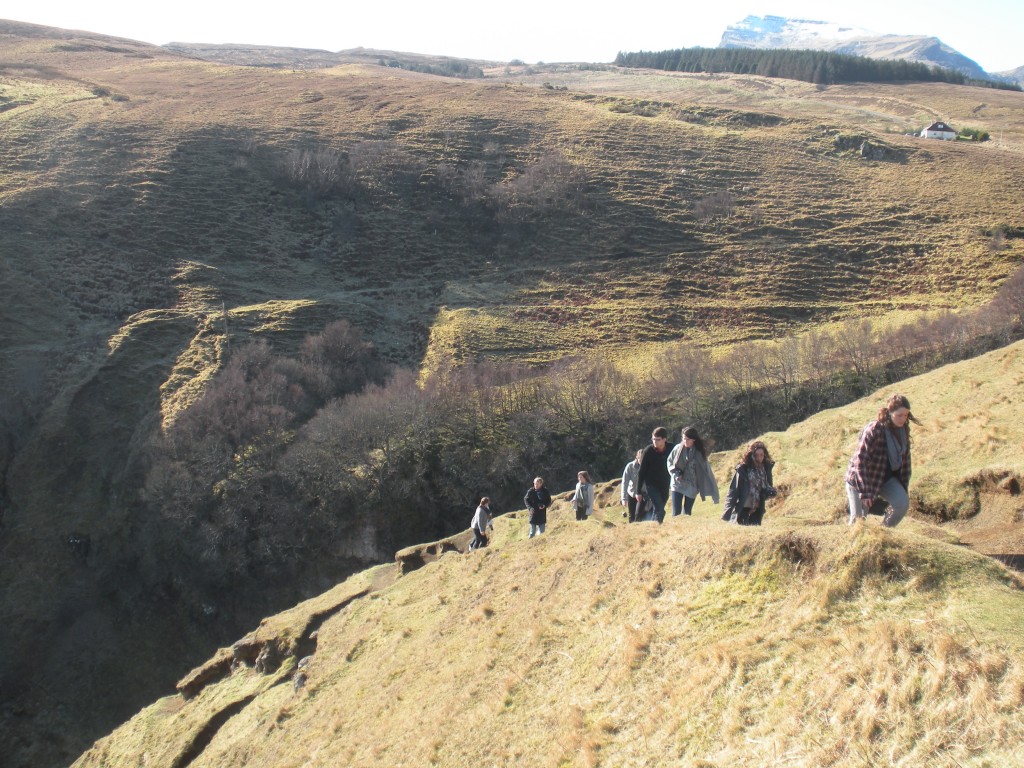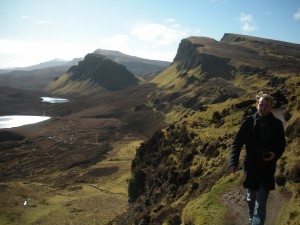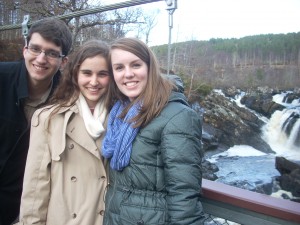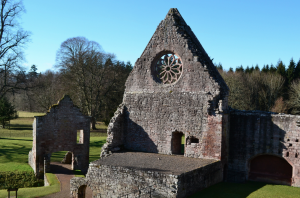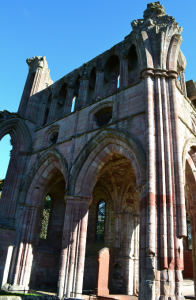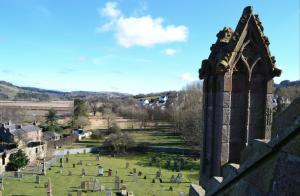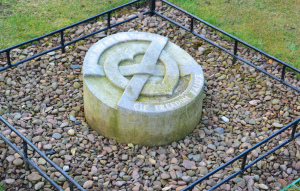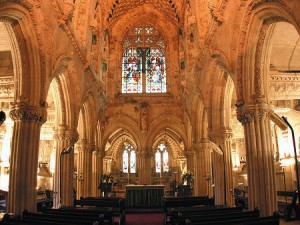It is our second day in Skye, and we awake bright and early in our cozy hostel in Portree to grab breakfast before the day really begins. Taking some cereal and juice down to the harbor, a group of us gather for a sunrise breakfast by the water, while others opt to explore Portree looking for an open café. It doesn’t take long, considering the size of the town. Afterwards, we gather at the bus to begin our touring for the day.
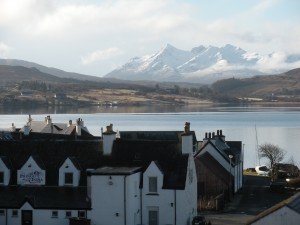
Between stops our guide, Mac, entertained us with stories and tales of the various Highland clans while he drove. Some of his best stories of the day involved tales of the wee people; the fairies. My favorite went as follows;
Scotland is an ancient land with an even more ancient past. Many years ago there were two bagpipers heading to the local highland games dressed in their ceremonial kilts. They decided to leave a day early to visit the local pubs the night before the competition, but it was a long walk and neither had horses. As they walked on the path through the woods towards Perth a wee man appeared beside them. He asked them about where they were going, and after a little conversation, he asked if they would want to make a little money. He was having a party and needed some pipers to provide music.
The two pipers agreed, a little money would help in their adventures in town. They followed the wee man into the woods. After a good walk, through trees like no other, and grass green like they had never seen, they came to a large boulder in the side of a cliff face. The wee man knocked on the stone with his cane, and to their shock a door magically appeared. The wee man encouraged them to come in, telling them there would be a bag of gold for each man after the party. Hesitantly, they walked in, and down a dark damp staircase for what seemed like an hour. Suddenly, they were in a great banquet hall, brightly light by golden candles. And the floor shimmered of gold, and the ceiling of jewels.
Rows and rows of wee people watched in silence as they prepared to play. The tunes then flowed from bagpipes they held, they played every song they knew, and some they didn’t. Drinks were flowing, everyone was dancing, and an unfathomable joy enveloped the room. Hours passed, but no one ever grew tired. The joy was too much. Time seemed to stand still. Then the wee man approached the pipers and said it was time to leave. So he handed them each a bag of gold, and showed them the door. It disappeared as they left.
The pipers continued heading to town, not believing the night they just had. As they got closer something was not right. The road was no longer dirt, it was a hard black surface. Large metal monsters clamored about. The buildings were taller and made with foreign substances. The people no longer were wearing kilts and speaking in gibberish. In panic, they ran to the old church, the only building they recognized. The elder priest knew the Gaelic, and the old ways, listening to the men he knew exactly what happened. He knew of the wee people and their ancient ways. It had been hundreds of years, not just a night. He asked them to place their hands on a Bible, so he could pray for them. As they did, they turned to dust, and disappeared.
There were three especially memorable stops we made this day, the first being at the Table. The Table is one of three notable rock formations in an area called the Quiraing, derived from Gaelic, which in turn came from a Norse phrase meaning “Round Fold.” The Quiraing encases these three formations: the Table, the Needle, and the Prison, in a beautiful vista of hills and ridges. The views look out onto Staffin Bay, and are some of the most famous (and most beautiful) on Skye. The Table itself is a plateau top that has slid down to form a grassy plain or sorts, and accessing it required a quick scramble up some “scree,” the accumulation of broken rock usually found at the base of a hill or mountain. While some made these trek, others decided to explore the ridges further down, taking naps in the peat or clambering around on the hills and ridges the spread forward as far as the eye could see. Only 5 made it to the top with Mac, but it was well worth the spectacular view we beheld. The sun beat down brightly, warming our skin from the cool breezy wind that whipped around, making it a perfect day for such beautiful landscapes to be taken in.
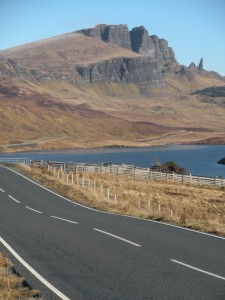
The next stop was the Fairy Glen. This is an area of rolling, pointed hills; small, gurgling streams; and roaming, adventurous sheep. It is also exactly the kind of place one can imagine faeries dancing in the moonlight, working their magic and planning their mischief. The major feature here is Castle Ewen, a natural rock formation resembling a tower at the peak of a ridge, presumably where these faeries would gather if they are real (never say never, eh?). Trent, being extra adventurous, rushed to the top of Castle Ewen, and then set about exploring the area in earnest, closely followed by the effervescent Stuart, who explained his energy by proclaiming he was in “nature mode.” Everyone enjoyed taking in the views of the loch below, and the rocks people (or faeries) had made into patterns visible from Castle Ewen.
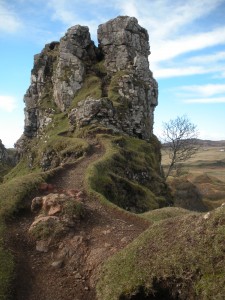
We stopped for lunch in another quaint town on Skye, Uig. The village is located on the Trotternish peninsular, and nestled in the Uig Bay. We ate at a Bed and Breakfast that served a delicious lunch, and the staff were friendly and welcoming. It was just as beautiful as everywhere we’d been before, and everywhere to come. No matter what we have to say about Skye, I think everyone can agree we were blessed with great weather to truly enjoy its undeniable beauty!
We went to countless other sights worth mentioning, such as Kilt Rock, to the east of Ellishader, which features a 180 foot waterfall cascading over a cliff-face of multicolored layers of dolerite; or a cemetery for the Clan MacDonald, who historically owned much of Skye. When we returned to Portree, we went straight for dinner, hungry from a long day of adventures and legends. We ate a delightful local seafood restaurant called the Lower Deck, which I think it is safe to say left us all singing its praises and with thoroughly satisfied appetites. Five Stars!
